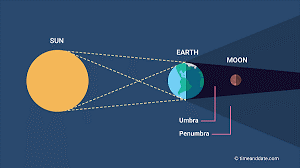Free Courses Sale ends Soon, Get It Now


Free Courses Sale ends Soon, Get It Now



Disclaimer: Copyright infringement not intended.
Context
About
What is Lunar Eclipse?
Shadow
Types of Lunar Eclipse
The Scientific Explanation Behind the Lunar Eclipse
Why Does a Total Lunar Eclipse Cause the Moon to Turn Red (Chandra Grahan)?
Effects of Lunar Eclipse (Chandra Grahan):
The Scientific Significance of Lunar Eclipses
Scientific Significance
Myths and Superstitions Regarding the Lunar Eclipse
Conclusion
|
PRACTICE QUESTION Explain the scientific phenomenon of a lunar eclipse and its significance in the field of astronomy. (150 words) |
© 2024 iasgyan. All right reserved